Embark on a captivating journey to Berwick, a town steeped in historical significance, architectural splendor, and vibrant community spirit. Its name, echoing through time, holds secrets that unravel the rich tapestry of this captivating destination.
From its strategic role in ancient conflicts to its enduring cultural legacy, Berwick has witnessed the ebb and flow of civilizations, leaving an indelible mark on its streets and souls. Today, it stands as a testament to resilience, innovation, and the enduring power of human connection.
Etymology of Berwick
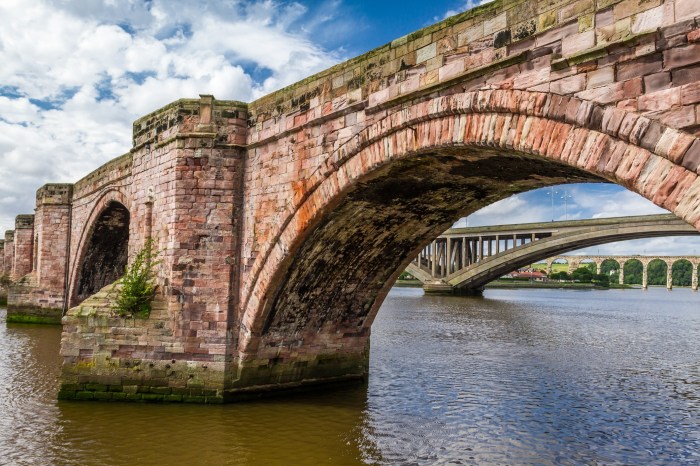
The name “Berwick” has an intriguing history, with its origins rooted in the ancient language of the Britons. The name is derived from the Brythonic Celtic word “Bere-wic,” which translates to “barley farm” or “settlement where barley is grown.” This etymology suggests that the area where Berwick is situated was once a thriving agricultural center, with barley cultivation playing a significant role in the local economy.
Alternative Spellings and Variations
Over time, the spelling of Berwick has undergone several variations. In the Domesday Book of 1086, the name was recorded as “Berewike.” Other historical spellings include “Berewich,” “Berwick upon Tweed,” and “Berwick-upon-Tweed.” The addition of “upon Tweed” to the name reflects the town’s strategic location on the River Tweed, which formed the border between England and Scotland.
Berwick, with its captivating history and stunning architecture, stands as a testament to the region’s rich heritage. Its charming streets beckon travelers to explore its hidden gems. While in Berwick, consider venturing to Bacalar, Mexico , a breathtaking lagoon renowned for its crystal-clear waters and vibrant colors.
Immerse yourself in the natural beauty of Bacalar before returning to Berwick to delve deeper into its captivating past and present.
Historical Significance of Berwick
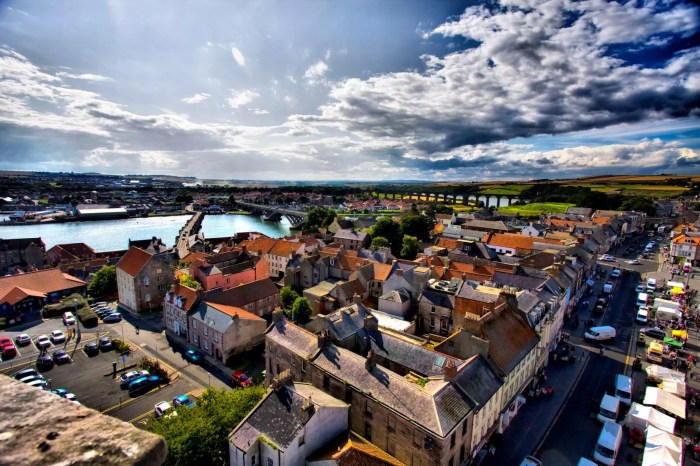
Berwick-upon-Tweed is a town in Northumberland, England, with a rich and significant history. It has been a battleground for centuries, due to its strategic location on the border between England and Scotland.
The historic town of Berwick-upon-Tweed is a popular tourist destination with its medieval walls and bridges. For a scenic day trip, consider visiting the charming town of Bellingen , located in the picturesque Bellinger Valley. With its lush rainforests, cascading waterfalls, and vibrant arts community, Bellingen offers a delightful escape.
Afterwards, return to Berwick and explore its fascinating history at the Berwick Museum and Art Gallery.
Berwick’s historical importance stems from its strategic location on the River Tweed, which made it a vital crossing point between England and Scotland. The town was first fortified by the Normans in the 11th century, and it became a major stronghold during the Anglo-Scottish Wars. Berwick was besieged and captured numerous times by both the English and the Scots, and it changed hands between the two countries several times over the centuries.
Edward I’s Siege
One of the most significant events in Berwick’s history was the siege of 1296, when Edward I of England laid siege to the town for nine months. The siege was one of the longest and most brutal in English history, and it resulted in the deaths of thousands of people. Edward I eventually captured Berwick, and he built a new town wall around it. The wall is still standing today, and it is one of the best-preserved medieval town walls in England.
Cultural and Architectural Heritage
Berwick has a rich cultural and architectural heritage. The town is home to a number of historic buildings, including Berwick Castle, the Guildhall, and the Town Hall. Berwick is also home to a number of museums and art galleries, including the Berwick Museum and Art Gallery, which houses a collection of local history and art.
Berwick Today
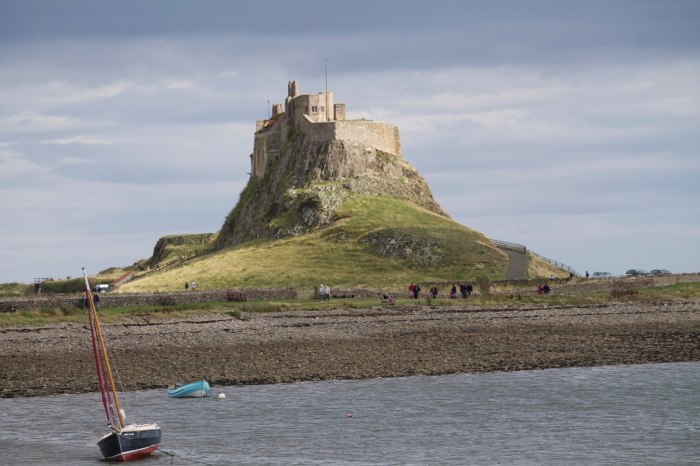
Berwick, a historic town with a rich past, continues to thrive in the present day. It boasts a vibrant community, a stable economy, and a range of amenities that make it an attractive place to live, work, and visit.
The town’s population has grown steadily over the years and now stands at approximately 12,000 residents. The demographics of Berwick reflect the town’s diverse history, with a mix of long-time residents and newcomers from various backgrounds.
Economic Activity
Berwick’s economy is primarily driven by tourism, agriculture, and manufacturing. The town is home to several historic sites, including Berwick Castle and the Berwick-upon-Tweed Barracks, which attract a significant number of visitors each year.
Berwick-upon-Tweed is a historic town in the north of England, with a rich past dating back to the Roman era. It is known for its medieval walls, which were built in the 13th century to protect the town from Scottish raids.
The town is also home to a number of other historic buildings, including Berwick Castle and Berwick Barracks. In addition to its historical significance, Berwick-upon-Tweed is also a popular tourist destination, with a number of attractions including the Berwick Museum and Art Gallery and the Berwick Film and Media Arts Festival.
The town is also a great place to learn about the Bedouin , a nomadic people who have lived in the Middle East for centuries. Berwick-upon-Tweed is a fascinating town with a lot to offer visitors.
The surrounding countryside is known for its fertile farmland, and agriculture remains an important industry in the area. Berwick is also home to a number of manufacturing businesses, including food processing, textiles, and engineering.
Infrastructure and Transportation
Berwick has a well-developed infrastructure, with a range of transportation options available. The town is located on the A1 Great North Road, which provides easy access to Edinburgh and Newcastle.
Berwick also has a railway station, which offers regular services to Edinburgh, Newcastle, and London. The town is also served by a number of bus routes, providing connections to the surrounding area.
Amenities
Berwick offers a wide range of amenities for its residents and visitors. The town has a number of schools, including Berwick High School and Berwick Academy.
Berwick also has a range of healthcare facilities, including Berwick Infirmary and the Berwick Health Centre. The town also has a number of shops, restaurants, and pubs.
Local Culture and Community Life
Berwick has a vibrant local culture and a strong sense of community. The town is home to a number of cultural organizations, including the Berwick Film Society and the Berwick Literary Society.
Berwick also has a number of sporting clubs, including the Berwick Rangers Football Club and the Berwick Rugby Club. The town also hosts a number of annual events, including the Berwick Film Festival and the Berwick Fringe Festival.
Notable Landmarks and Attractions

Berwick boasts a rich history and heritage, reflected in its many iconic landmarks and attractions. From ancient ruins to modern marvels, there’s something for every visitor to enjoy.
Berwick Castle
Berwick Castle, a 13th-century fortress, is one of the most prominent landmarks in the town. Perched on a hill overlooking the River Tweed, the castle has played a pivotal role in Scottish and English history, witnessing countless battles and sieges. Today, it’s open to the public and offers stunning views of the surrounding countryside.
Berwick Walls
Encircling the historic town center, Berwick Walls are a magnificent example of medieval fortifications. Built in the 14th century, the walls feature numerous towers and gates, providing a glimpse into the town’s past as a fortified stronghold. Visitors can walk along the walls, exploring the ramparts and enjoying panoramic views of Berwick and the surrounding area.
Old Bridge
Crossing the River Tweed, Old Bridge is a historic stone bridge dating back to the 17th century. It’s the only remaining bridge in the UK to have fortified towers on either end, adding to its unique charm. The bridge offers picturesque views of the river and the surrounding landscape, making it a popular spot for locals and tourists alike.
Berwick Museum and Art Gallery
Housed in a beautiful Victorian building, Berwick Museum and Art Gallery showcases the town’s rich history and culture. The museum displays artifacts from Berwick’s past, including archaeological finds, historical documents, and works of art. The art gallery features a collection of paintings, sculptures, and ceramics, showcasing the town’s artistic heritage.
Marygate
Marygate is one of the main thoroughfares in Berwick, lined with historic buildings and independent shops. The street leads to Marygate Bridge, a 16th-century bridge that spans the River Tweed and offers stunning views of the river and the surrounding countryside.
Berwick in Literature and Art
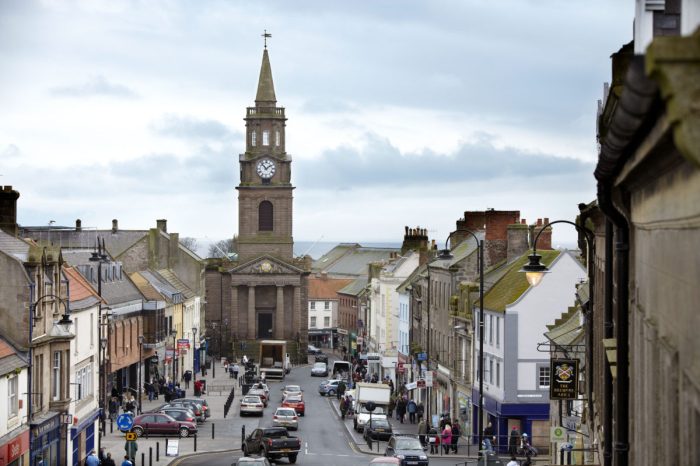
Berwick has captured the imaginations of creatives throughout history, inspiring works in literature, music, and visual arts. These representations have played a significant role in shaping the town’s cultural identity and showcasing its unique character.
Literary Portrayals
Berwick has been featured in numerous literary works, including novels, poems, and short stories. Notable authors who have written about the town include:
–
- Sir Walter Scott: In his historical novel “The Monastery” (1820), Scott depicts Berwick as a contested border town during the 16th century.
- Elizabeth Gaskell: Her novel “Wives and Daughters” (1866) features Berwick as the setting for several scenes, capturing the town’s social and cultural life.
- L.P. Hartley: His novel “The Go-Between” (1953) uses Berwick as a backdrop for a coming-of-age story, exploring themes of memory and nostalgia.
Artistic Representations
Berwick has also inspired artists and musicians. Notable examples include:
–
- J.M.W. Turner: The renowned landscape painter created several paintings of Berwick, including “Berwick-upon-Tweed from the Sea” (1835), which depicts the town’s dramatic coastline.
- Thomas Bewick: The engraver and naturalist was born in Berwick and his work often featured local landscapes and wildlife.
- The Lindisfarne Gospels: This illuminated manuscript, created by monks on the nearby island of Lindisfarne, contains intricate illustrations of Berwick and its surrounding area.
These literary and artistic representations have contributed to Berwick’s cultural heritage, providing valuable insights into its history, people, and landscape. They have also fostered a sense of place and belonging among Berwick’s residents and visitors alike.
Comparison to Other Towns
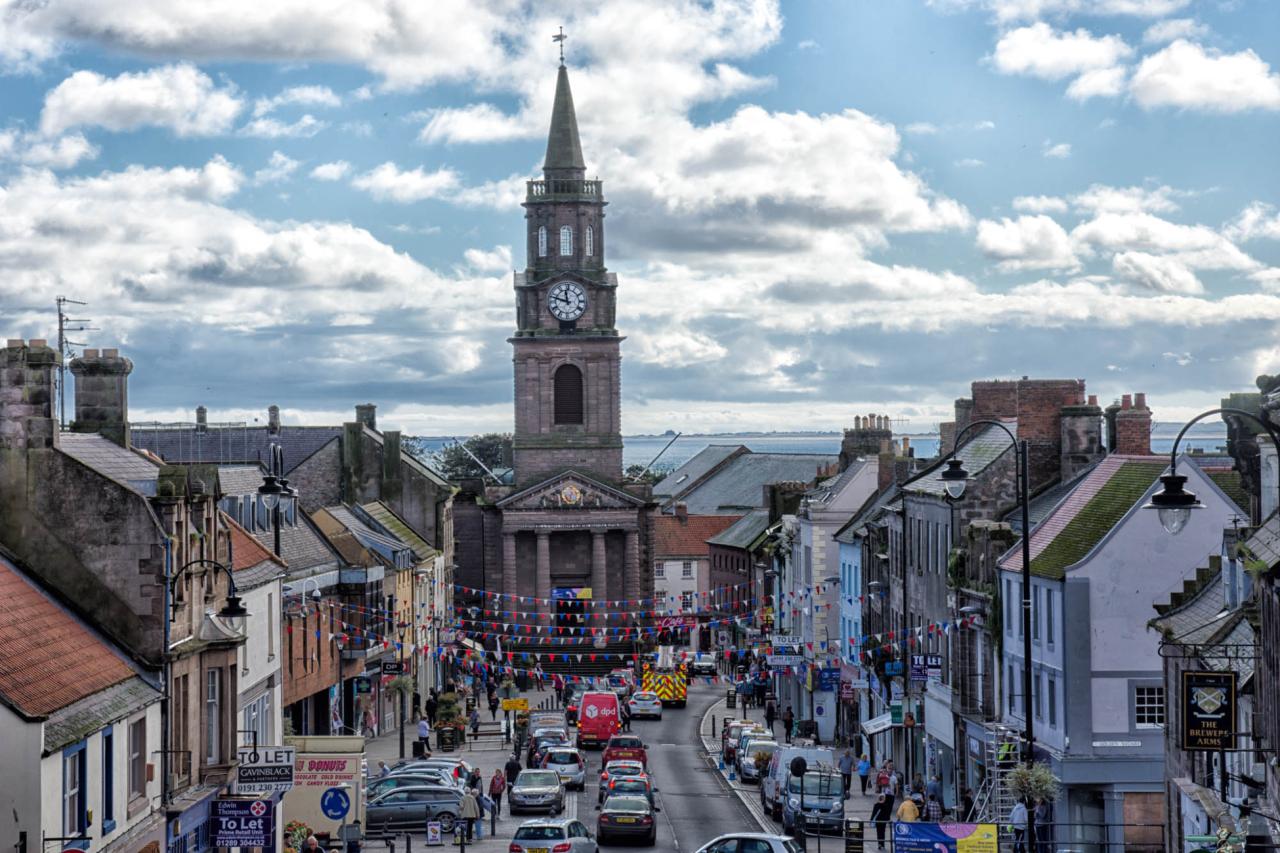
Berwick stands out among other towns and cities in the region, offering a unique blend of historical charm, natural beauty, and modern amenities. While sharing similarities with neighboring towns, Berwick possesses distinct characteristics that set it apart.
Population and Economy, Berwick
Berwick’s population is comparable to that of other small towns in the region, with a population of approximately 12,000 residents. Its economy is primarily driven by tourism, agriculture, and small businesses. In contrast to larger cities, Berwick maintains a strong sense of community and a close-knit population.
Culture and Attractions
Berwick’s cultural landscape is influenced by its rich history and diverse population. The town boasts several historical landmarks, museums, and art galleries that showcase its heritage. Compared to other towns, Berwick offers a vibrant arts scene, with regular events, festivals, and exhibitions. Its natural surroundings, including the Berwick Hills and the River Tweed, provide ample opportunities for outdoor recreation and scenic walks.
Unique Characteristics
Beyond its shared attributes with other towns, Berwick possesses several unique characteristics that contribute to its charm. The town’s medieval fortifications, including the iconic Berwick Castle, set it apart from neighboring settlements. Berwick’s location on the border between England and Scotland has shaped its history and culture, resulting in a blend of architectural styles and cultural influences.
Closure
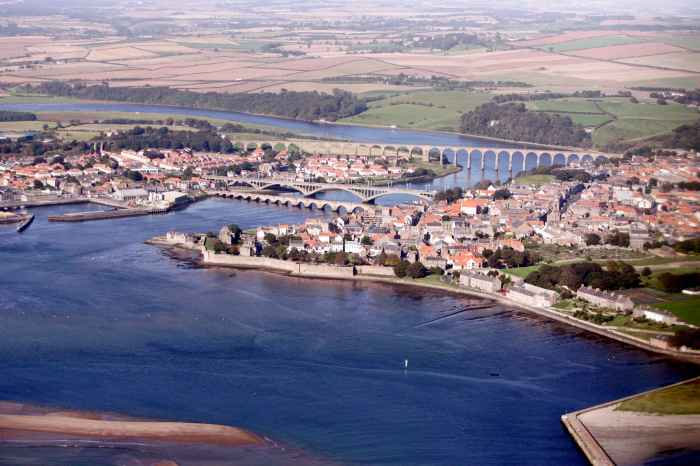
As we bid farewell to Berwick, its essence lingers, reminding us of the profound impact that history, culture, and community can have on the human experience. Its story serves as a timeless reminder that even in the smallest of towns, the echoes of the past resonate with the vibrant energy of the present.
Questions Often Asked
What is the etymology of the name “Berwick”?
The name “Berwick” is derived from the Old English words “bere” (barley) and “wic” (settlement), suggesting a settlement where barley was cultivated or traded.
What is Berwick’s historical significance?
Berwick played a pivotal role in Anglo-Scottish conflicts, changing hands between the two nations multiple times. Its strategic location on the border made it a fiercely contested prize.
What are some notable landmarks in Berwick?
Berwick boasts an array of landmarks, including the medieval Berwick Castle, the Elizabethan Berwick Walls, and the Georgian Berwick Barracks. These structures offer a glimpse into the town’s rich past.